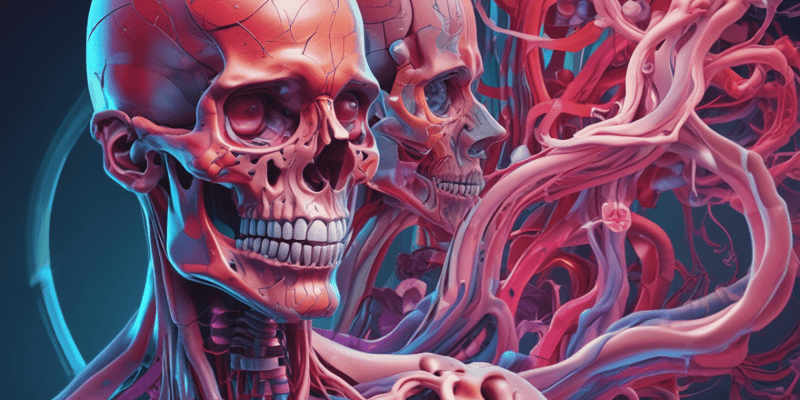18 Questions
What is the role of a pathologist in surgical cases?
Analyzing tissue samples for disease nature & extent
Which subspecialty of physiology focuses on changes in cell and organ functions due to muscular activity?
Exercise Physiology
What level of organization consists of structures composed of two or more different types of tissues?
Organs
Which subspecialty of physiology focuses on the body's defenses?
Immunology
What does the study of radiographic anatomy involve visualizing with x-rays?
Organs
Which level of organization represents the basic structural and functional unit of an organism?
Cells
What is the main focus of surface anatomy?
Visualizing or palpating body surface markings
What does developmental anatomy primarily study?
The development of organs from a fertilized egg to adult form
What is the difference between systemic and regional approaches in anatomy?
Systemic approach examines individual systems or organs, while regional approach divides the body into different regions or compartments
What is the main focus of histology?
The study of tissues
During which phase does organogenesis occur in developmental anatomy?
Embryonic stage
What does cytology primarily focus on?
Individual cellular structures
What is the main focus of surface anatomy?
Study of form and markings of body surface
Which approach examines individual systems or organs within the body?
Systemic approach
What does developmental anatomy primarily study?
Embryonic development into adult form
What is the main focus of histology?
Tissues
What is the science of body functions known as?
Physiology
What is the study of individual cellular structures called?
Cytology
Study Notes
Role of a Pathologist in Surgical Cases
- Pathologists analyze tissue samples to diagnose diseases and guide treatment decisions.
- In surgical cases, they provide vital information through frozen section analysis to ensure margins are clear of cancer.
Subspecialty Focus on Muscle Activity
- Exercise physiology concentrates on changes in cell and organ functions due to muscular activity.
Level of Organization with Multiple Tissue Types
- An organ level consists of structures composed of two or more different types of tissues working together.
Subspecialty Focus on Body Defenses
- Immunology is the branch of physiology that explores the body’s defenses against pathogens.
Radiographic Anatomy and X-rays
- Radiographic anatomy involves visualizing internal structures through imaging techniques like x-rays for diagnosis and treatment planning.
Basic Unit of Organization
- Cellular level represents the basic structural and functional unit of an organism.
Main Focus of Surface Anatomy
- Surface anatomy focuses on external features and landmarks of the body, often used for physical examinations.
Developmental Anatomy Studies
- Developmental anatomy primarily studies the changes in structure throughout the life cycle, particularly from fertilization to maturity.
Systemic vs. Regional Approaches in Anatomy
- Systemic anatomy examines individual systems, such as the cardiovascular or nervous systems, enhancing understanding of their functions.
- Regional anatomy studies all structures in a particular area of the body, providing a holistic view of that region.
Main Focus of Histology
- Histology focuses on the study of tissue structure at the microscopic level, crucial for understanding organ function and pathology.
Organogenesis Phase
- Organogenesis occurs primarily during the embryonic phase of developmental anatomy, where organs form from the three germ layers.
Focus of Cytology
- Cytology centers on the study of individual cellular structures and their functions within organisms.
Science of Body Functions
- Physiology is the science that studies the functions of the body and its parts, detailing how various systems operate.
Study of Cellular Structures
- Cytology is the specific study of individual cellular structures, focusing on their composition, structure, and functions.
Explore the fundamental concepts and subdivisions of anatomy and physiology, including surface anatomy and gross anatomy. Understand the relationship between body structure and function, and delve into the study of anatomical structures at different levels.
Make Your Own Quizzes and Flashcards
Convert your notes into interactive study material.




